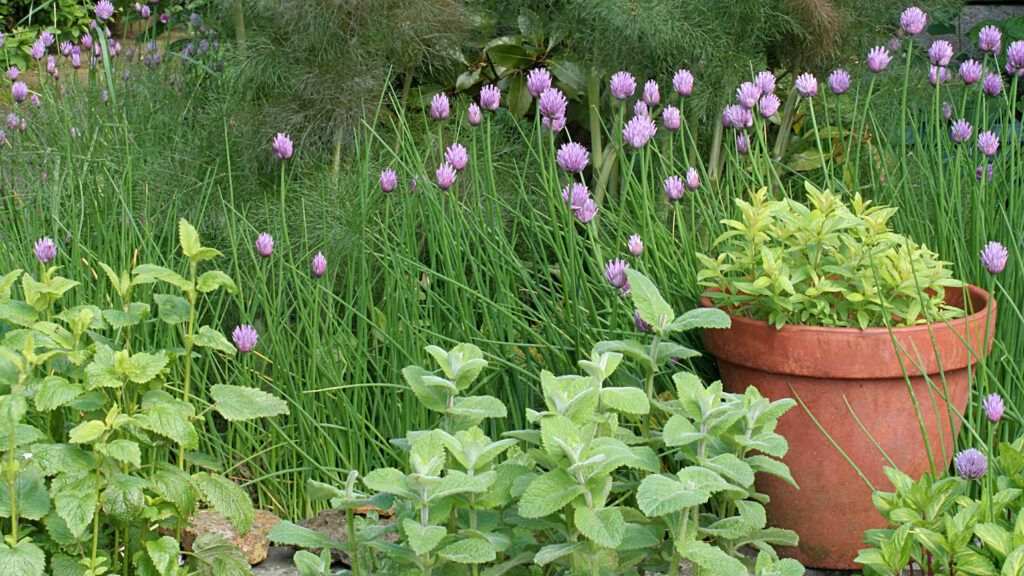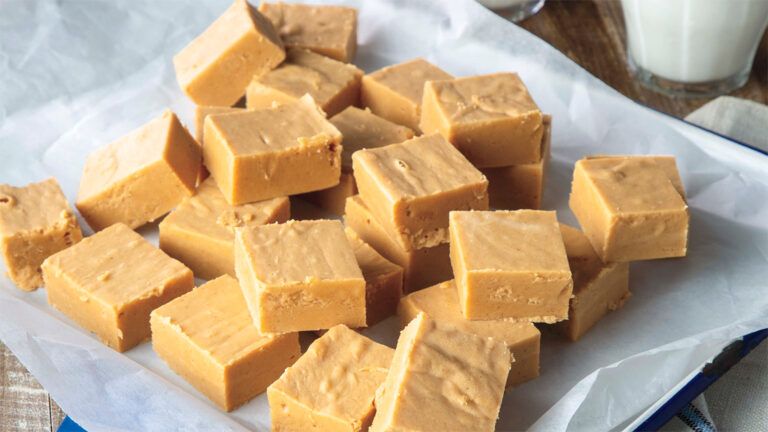What’s an easy, inexpensive, delicious and attractive hallmark of a summer garden? Herbs! From leafy parsley, basil and cilantro, to earthy thyme, oregano, rosemary and sage, to frilly dill, herbs are garden superstars, adding flavor and beautiful greenery to your summer beds.
If you’re going to keep your herbs happily leafing out all season long, you’ll need a few simple pruning skills in your toolbox. Your goal is to encourage the plant to put all its energy into its tasty, beautiful leaves rather than “bolting” into flower.
Trim “Leggy” Parts of Basil
The worst thing that can happen to your herb plants is for them to become “leggy,” sending out long, thin stems that only leaf at the ends. Basil does this all too easily—but not if you’re ready to prune. With clean shears or kitchen scissors, trim long stems weekly, snipping each one three quarters of an inch above a leaf node. You’ll quickly see the fruits of your labor when the plant puts out two juicy new sets of leaves from where you cut.
Prune Off the Outer Stems of Parsley and Friends
Parsley, cilantro and other leafy herbs grow in a formation that’s almost like a concentric circle. Keep your plant happy and prolific by pinching off the outer stems to encourage new growth to lean out, not up (too far up, and you’ll get a dreaded flower). Cut your stems close to the ground to keep the plant compact and growing.
Keep Up with Your Woody Herbs
Rosemary, thyme and oregano are hearty, perennial herbs that can keep you in sauces, soups and stews for years if you treat them right. Prune rosemary plants by taking two to three inches off each stem weekly. Thyme and oregano should be snipped just above a leaf node to encourage new growth. More good news about thyme and oregano is that they still produce their high-flavor leaves even after flowering.
Be Assertive with Your Mint…
…because your mint will be assertive with you! This notorious garden spreader will stretch out and luxuriate in any space you give it. Cut mint stems in half every few weeks to keep it from getting too woody, tough or flower-topped.
Pinch Off Flowers…or Don’t
If your herbs do end up flowering, don’t panic. You can either pinch back the stems and see if you can urge the plant to leaf out again, or you can let the flowers stand as the beautiful pollinator-attractors that they are. Herb plants are good for everyone, including bees and butterflies!
Save Your Seeds
If your parsley, cilantro or dill plants flower, they’ll eventually seed. This isn’t great news for this year’s salads, but it’s terrific news for next year’s garden. Collect seeds into a clean envelope and store in a dry place until you’re ready to plant. As any lifelong gardener can tell you, sometimes gardening is as much about next season as it is about this one! Cilantro, which infamously bolts early in many regions, has an added bonus—its seeds can be used in any recipes that call for coriander seed. Same goes for dill, which bolts early in the summer heat.
How do you prune your herb plants for maximum beauty and harvest?






